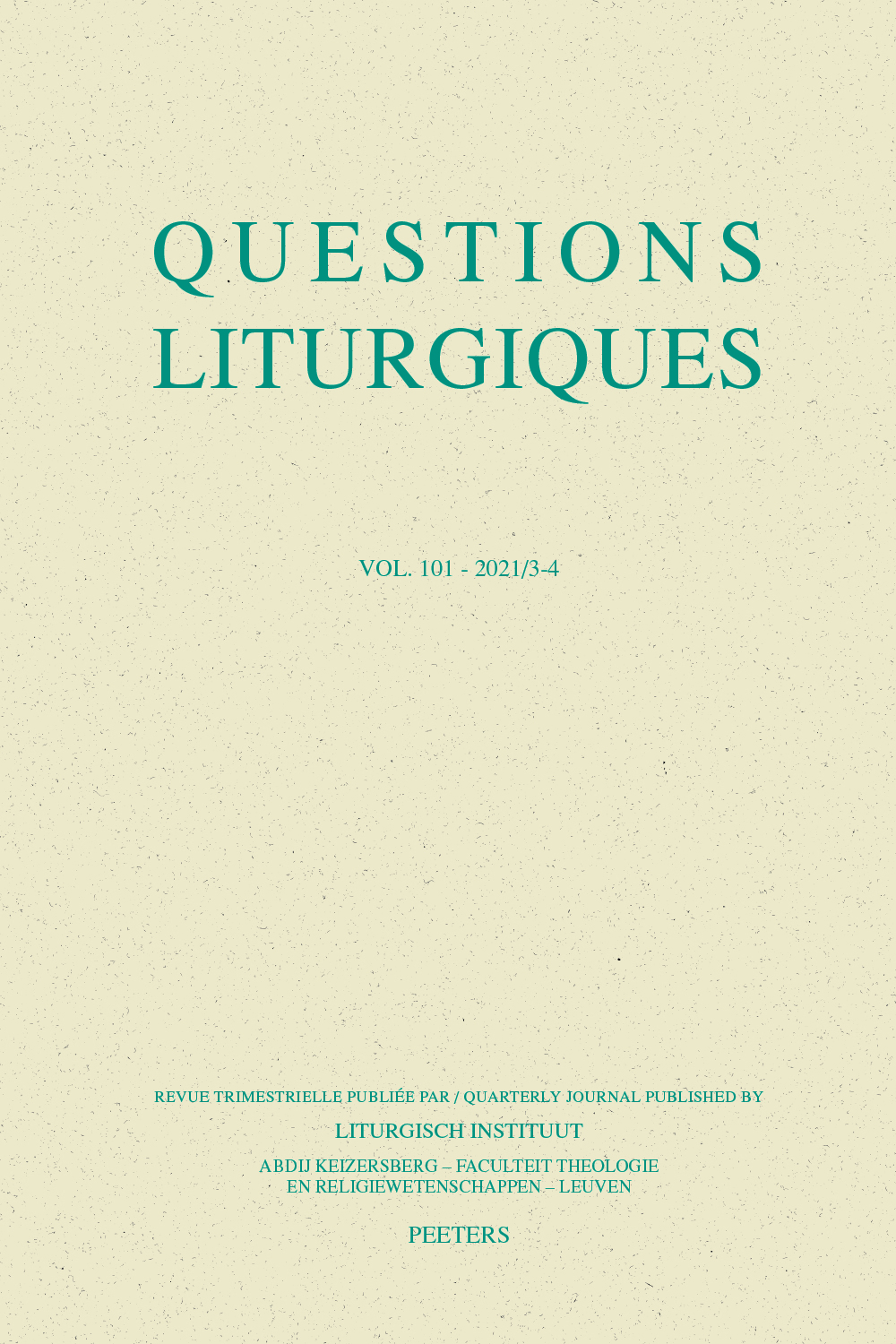 previous article in this issue previous article in this issue | next article in this issue  |

Preview first page |
Document Details : Title: Felix Wilfred on the 'Poor' (Other) as the Expression of Jesus' Sacramental Presence in the Indian Socio-Ecclasial Context Author(s): JOHNSON, Siluvai Pillai Journal: Questions Liturgiques/Studies in Liturgy Volume: 89 Issue: 4 Date: 2008 Pages: 273-297 DOI: 10.2143/QL.89.4.2036187 Abstract : The present India that is ruled by the political agents of globalization and culturally conditioned by the sanskritzed ideology of the nefarious network of the rich and the powerful push aside the poor, subaltern and the untouchables to the margins of the every singular site of human community. Felix Wilfred reads this context as the reign of Kaliyuga, which designates the fall of the local and the failure of the poor. It is this negation of the poor 'Other' that indicates the rejection of the reign of God that was envisaged by Jesus Christ. He conceives that the empowerment of the poor (Other) confirms the sacramental presence of Jesus in the Indian community, because the irruption of the least (Antyodaya) heralds the essence of God’s rule, which is the meaning and message that are conveyed in and through the paschal mystery of Jesus Christ. Through his Advaitic commitment, which means by fulfilling the will of the Father and the agenda of the 'Other' simultaneously, Jesus expressed the meaning of kenosis to the human world. The Ecclesial community that has been born out of the self-giving of Jesus could be manifesting the human face of the divine in the Indian soil through its pledge to incorporate the sense of Subalterness or Otherness into its very fabric. It is this ethical commitment of the believing community that exposes the presence of the sacramental body of Jesus Christ to the rest of the communities that co-exist with it. L’Inde contemporaine, qui est gouvernée par les agents politiques de la globalisation et conditionnée par l’idéologie sanscrite du réseau infâme des riches et des puissants, pousse les pauvres, les subalternes et les intouchables aux marges de chaque côté particulier de la communauté humaine. Félix Wilfred interprète ce contexte comme étant le royaume de Kaliyuga, qui indique la perte du local et l’échec des pauvres. C’est la négation du pauvre «Autre», qui indique le rejet du Royaume de Dieu comme envisagé par Jésus Christ. Wilfred considère que la mise en puissance des pauvres (Autre) confirme la présence sacramentelle de Jésus dans la communauté indienne, parce que l’irruption des inférieurs (Antyodaya) est l’annonce de l’essentiel du gouvernement de Dieu, ce qui est la signification et le message qui sont transmis dans et par le mystère pascal de Jésus Christ. À travers cet engagement Advaitic, ce qui signifie par l’accomplissement de la volonté du Père et en même temps de l’agenda de l’Autre, Jésus exprime la signification de la ‘kenosis’ envers le monde. La communauté ecclésiale, qui est originaire du don de soi de Jésus, peut montrer la face humaine du divin dans la terre indienne à travers le gage d’incorporer le sens de subalternité ou de différence dans sa matière réelle. C’est exactement cet engagement éthique de la part de la communauté des fidèles qui révèle la présence du corps sacramentel de Jésus Christ envers les autres communautés qui co-existent avec elle. |
|


